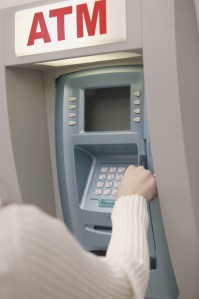“ATM in Restaurant or Retail Location: Increased Sales, Customer Convenience,” by Nationwide Automated Systems
 Many businesses opt to place an automatic teller machine in their facilities. These machines prove extremely convenient for customers, who can use their credit, bank, and debit cards to obtain cash. It also promotes retail objectives, because it keeps customers in the store, restaurant, hotel, or other type of business; if they were forced to leave the establishment to seek funds, they might choose to make their purchases elsewhere.
Many businesses opt to place an automatic teller machine in their facilities. These machines prove extremely convenient for customers, who can use their credit, bank, and debit cards to obtain cash. It also promotes retail objectives, because it keeps customers in the store, restaurant, hotel, or other type of business; if they were forced to leave the establishment to seek funds, they might choose to make their purchases elsewhere.
According to reports, companies with on-site ATMs increase sales and generate walk-in traffic. Moreover, establishments that have an ATM reduce and even eliminate the need to accept credit cards and checks. Accepting credit and debit cards necessitates considerable expense, including equipment, connections, maintenance, and fees. Checks pose similar problems for companies that employ online mechanisms or other verification methods to determine whether the customer has sufficient funding to cover the amount of the sale.
About Nationwide Automated Systems:
In business for more than 15 years, Nationwide Automated Systems offers businesses the opportunity to place ATMs on-site without the need for financial outlays for maintenance and updates. The company, which operates throughout the United States, provides diligent customer response and service seven days a week. In addition, Nationwide Automated Systems designs custom wood cabinets for hotels that match each facility’s décor.